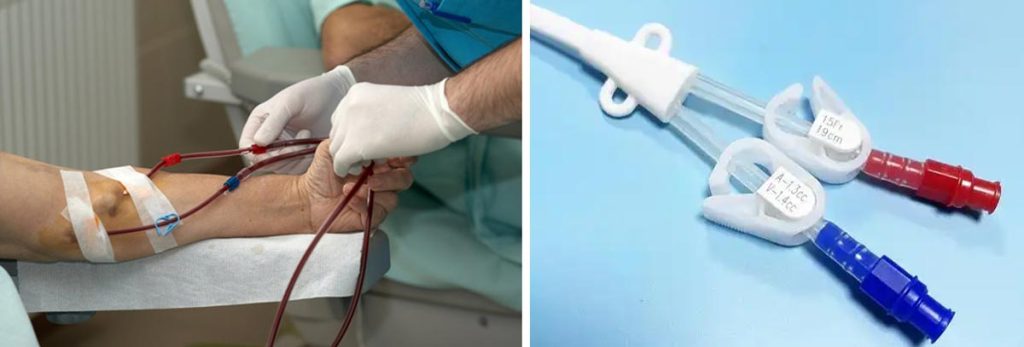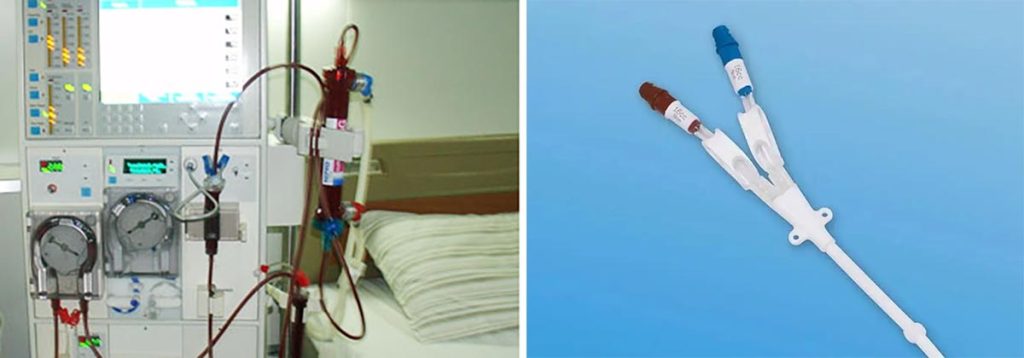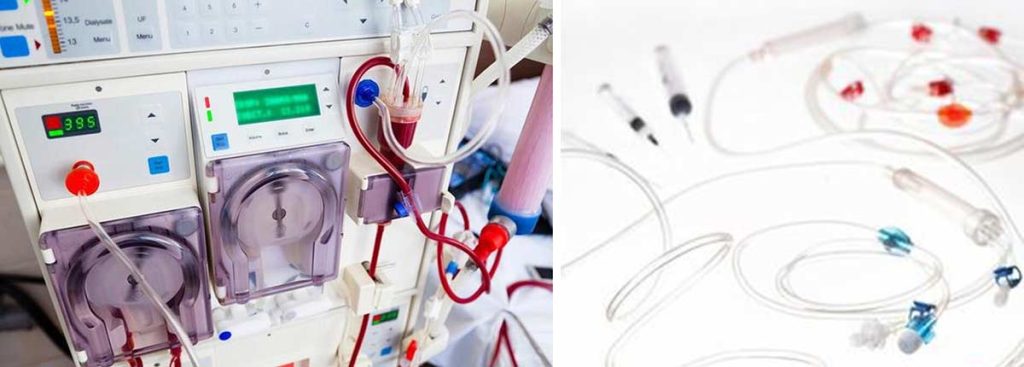

Leg cramps often trouble patients after dialysis. These cramps result from fluid shifts and imbalances in electrolytes like potassium and calcium. Proper hydration and dietary adjustments can help prevent leg cramps. Patients should also follow their dialysis schedules closely to avoid complications. Taking these steps reduces the risk of cramp episodes and improves overall comfort.
Staying proactive in managing hydration and nutrition plays a key role in preventing leg cramps after dialysis.
Key Takeaways
- Drink enough water but don’t overdo it. Staying hydrated helps stop leg cramps after dialysis.
- Eat less salt, about 2,000 mg or less daily. This helps your body hold less water and lowers cramp risks.
- Always go to your dialysis sessions. Missing dialysis treatments can cause too much fluid in your body and more cramps.
- Do stretches and easy exercises often. These help your body stay flexible and improve blood flow, which stops cramps.
- Talk to your doctor or nurse often. Telling them your symptoms helps them change your care if needed.
Understanding the Causes of Dialysis Muscle Cramps
Fluid and Electrolyte Imbalances
How Fluid Removal During Dialysis Impacts Muscle Function?
Dialysis removes excess fluid from the body, which can disturb the balance of electrolytes. This process, especially when performed rapidly, often leads to muscle cramps during dialysis. Fluid shifts between compartments in the body disrupt homeostasis, affecting neuromuscular function. These disruptions can cause uncoordinated muscle contractions, resulting in cramps. Slower dialysis sessions help maintain electrolyte equilibrium, reducing the risk of cramping.
The Role of Potassium, Calcium, and Magnesium in Preventing Cramps
Electrolytes like potassium, calcium, and magnesium play a vital role in muscle function. Potassium ensures proper muscle contractions, while calcium supports nerve signaling. Magnesium helps relax muscles after contraction. An imbalance in these electrolytes during dialysis can provoke cramps. Maintaining optimal levels of these minerals through diet or supplements can prevent muscle cramps during dialysis.
Dialysis-Related Factors
Insufficient or Overly Aggressive Fluid Removal
Excessive fluid removal during dialysis can lead to cramps. Dialysis patients often report acute pain due to rapid fluid loss. This process can also cause low blood pressure during dialysis, further contributing to muscle cramps. Adjusting fluid removal rates based on individual needs can minimize these risks.
Profiling Sodium to Reduce Cramping Risks
Sodium profiling during hemodialysis helps reduce cramping risks. By gradually adjusting sodium levels in the dialysis solution, the body experiences fewer electrolyte imbalances. This method prevents sudden shifts in sodium concentration, which can trigger cramps.
Other Contributing Factors
Poor Circulation and Its Effect on Muscles
Poor circulation, common in dialysis patients with chronic kidney disease, reduces oxygen delivery to muscles. This lack of oxygen can lead to muscle fatigue and cramping. Improving circulation through light exercise or physical therapy can alleviate these symptoms.
Underlying Conditions Like Diabetes or Neuropathy
Underlying conditions such as diabetes or neuropathy can worsen muscle cramps during dialysis. These conditions impair nerve function, making muscles more prone to cramping. Managing these health issues alongside dialysis treatment can help reduce the frequency of cramps.
How to Prevent Leg Cramps After Dialysis
Managing Fluid and Sodium Intake
Following Fluid Restrictions to Avoid Dehydration
Dialysis patients must carefully manage fluid intake to prevent dehydration and reduce the risk of cramps. Excessive fluid consumption between treatments can lead to fluid overload, making it harder for dialysis to remove the excess. On the other hand, insufficient fluid intake may cause dehydration, which can trigger muscle cramps. Individualized fluid prescriptions, tailored to kidney function and treatment type, help patients manage fluid gains between treatments effectively. Consulting with a dietitian ensures patients receive personalized advice on maintaining proper hydration levels.
Limiting Sodium Intake to 2,000 mg or Less Daily
To prevent leg cramps, dialysis patients should manage sodium intake carefully. High sodium levels can cause fluid retention, leading to swelling and increased cramping risks during dialysis. Experts recommend limiting sodium intake to 2,000 mg or less daily. This approach not only helps control blood pressure but also reduces the strain on the body during fluid removal. Dietary counseling plays a crucial role in helping patients avoid sodium-rich foods and additives, which often contribute to fluid retention.
Completing Prescribed Dialysis Sessions
Risks of Skipping or Shortening Dialysis Treatments

Skipping or shortening dialysis treatments can significantly increase the likelihood of muscle cramps. Completing full sessions as prescribed ensures proper fluid removal and maintains electrolyte balance. When patients cut sessions short, fluid overload may occur, leading to cramping and other complications. Longer or more frequent treatments, if recommended by a healthcare provider, can lower the ultrafiltration rate. This adjustment reduces the risk of cramping by allowing the body to adapt to fluid removal more gradually.
Dietary Adjustments to Prevent Dialysis Muscle Cramps
Foods Rich in Potassium, Calcium, and Magnesium
A balanced diet rich in potassium, calcium, and magnesium can help prevent dialysis muscle cramps. Foods like bananas, oranges, and spinach provide potassium, which supports proper muscle contractions. Calcium-rich options such as fortified plant milk and low-fat dairy products improve nerve signaling. Magnesium, found in nuts, seeds, and whole grains, helps muscles relax after contraction. Dialysis patients should consult their healthcare team to determine safe levels of these nutrients based on their individual needs.
Avoiding Foods That Contribute to Fluid Retention
Certain foods can worsen fluid retention, increasing the risk of cramps during dialysis. Processed foods, canned soups, and salty snacks often contain high sodium levels, which promote water retention. Sugary beverages and alcohol can also disrupt fluid balance. Avoiding these items helps patients manage fluid gains between treatments and reduces the strain on their bodies during dialysis. A dietitian can provide tailored recommendations to support better nutrition and cramp prevention.
Stretching and Physical Activity
Daily Stretching Routines to Prevent Muscle Tightness
Stretching plays a vital role in reducing muscle tightness after dialysis. Regular stretching helps improve flexibility and promotes better blood flow to the muscles. Dialysis patients can perform simple stretches at home without requiring special equipment. For example, calf stretches, hamstring stretches, and seated forward bends are effective in loosening tight muscles. These exercises warm up the muscles and reduce the risk of cramping.
Dialysis patients should aim to stretch daily, preferably before and after dialysis sessions. Holding each stretch for 15 to 30 seconds allows the muscles to relax and lengthen. It is important to avoid bouncing during stretches, as this can strain the muscles. Consulting a healthcare provider ensures that the chosen stretching techniques are safe and suitable for individual needs.
Tip: Incorporating stretching into a daily routine not only prevents cramps but also enhances overall mobility and comfort.
Light Exercises Like Walking or Using a Stationary Bike
Engaging in light physical activity helps dialysis patients maintain muscle strength and improve circulation. Activities such as walking, cycling, or using a stationary bike are excellent options. These exercises are low-impact and reduce the likelihood of muscle fatigue or injury. Walking outdoors provides additional mental health benefits, as exposure to fresh air and sunlight boosts mood and energy levels.
Indoor exercises are equally beneficial. Patients can walk on a treadmill, cycle on a stationary bike, or even dance to their favorite music. Swimming is another great option, as it provides a full-body workout while being gentle on the joints. Regular physical activity not only prevents muscle cramps but also supports cardiovascular health and overall fitness.
Note: Always consult a doctor before starting any new exercise program to ensure it aligns with individual health conditions and dialysis treatment plans.
Managing Dialysis Muscle Cramps When They Occur
Immediate Remedies
Stretching and Massaging the Affected Muscle
Stretching and massaging the affected muscle can provide quick relief from cramps. Gently stretching the muscle helps relax it and restore normal function. For example, patients experiencing calf cramps can try pulling their toes upward while keeping the leg straight. Massaging the area with firm but gentle pressure improves blood flow, which reduces cramp severity. Placing the patient flat on their back with legs slightly elevated can also help alleviate the effects of dialysis muscle cramps. These simple techniques are effective and easy to perform during or after dialysis sessions.
Applying Heat or Cold Packs for Relief
Heat or cold packs can soothe cramped muscles. Applying a warm compress relaxes tight muscles and improves circulation. Conversely, cold packs reduce inflammation and numb the area, providing immediate relief. Patients should use a method that feels most comfortable for them. For safety, heat or cold packs should not be applied directly to the skin. Wrapping them in a cloth prevents burns or frostbite. These remedies are practical and can be used at home or in dialysis centers.
Medications and Supplements
Over-the-Counter Pain Relievers
Over-the-counter pain relievers, such as acetaminophen or ibuprofen, can help manage the discomfort caused by cramps. These medications reduce inflammation and provide temporary relief. However, patients should consult their healthcare provider before using them to ensure safety, especially if they have other medical conditions.
Magnesium or Potassium Supplements for Cramp Prevention
Magnesium and potassium supplements may prevent cramps by addressing electrolyte imbalances. Magnesium helps muscles relax, while potassium supports proper muscle contractions. Although magnesium replacement has shown effectiveness in pregnant women, limited evidence exists for its use in dialysis patients. Healthcare providers may recommend a trial of oral magnesium or potassium supplements based on individual needs.
Vitamin K2 Supplementation for Reducing Cramp Severity
Vitamin K2 supplementation has been linked to reduced cramp severity in some cases. This vitamin supports muscle health and may help alleviate the signs of oncoming muscle cramps. Patients experiencing frequent cramps should discuss this option with their doctor to determine its suitability.
Lifestyle Adjustments
Regular Physical Activity to Improve Circulation
Regular physical activity improves circulation and reduces the risk of cramps. Light exercises, such as walking or swimming, enhance blood flow to the muscles. Improved circulation ensures that muscles receive adequate oxygen and nutrients, which helps prevent cramping. Patients should engage in activities that match their fitness level and consult their healthcare team before starting new routines.
Managing Stress to Reduce Muscle Tension
Stress management plays a crucial role in preventing cramps. High stress levels can increase muscle tension, making cramps more likely. Relaxation techniques, such as deep breathing, meditation, or yoga, help reduce stress and promote muscle relaxation. Incorporating these practices into daily life can improve overall well-being and reduce the effects of dialysis muscle cramps.
Tip: Combining physical activity with stress management techniques can enhance their effectiveness in preventing cramps.
Best Practices for Long-Term Management of Dialysis Muscle Cramps
Regular Communication with Your Healthcare Team
Reporting Symptoms to Adjust Treatment Plans
Effective communication with healthcare providers plays a critical role in managing dialysis muscle cramps. Patients should report symptoms like cramping, fatigue, or discomfort during or after dialysis sessions. This feedback allows healthcare teams to adjust treatment plans, such as modifying fluid removal rates or electrolyte levels, to better suit individual needs.
Engaging in open discussions about treatment options and personal preferences improves adherence to dialysis treatment. Including family members in these conversations can also enhance outcomes. Family-centered education has been shown to reduce complications like muscle cramps and improve overall patient well-being. Regular check-ins with healthcare providers ensure that treatment plans remain effective and aligned with the patient’s evolving health status.
Monitoring and Adjusting Your Diet
Working with a Dietitian to Optimize Nutrition

Collaborating with a dietitian helps patients maintain a balanced diet tailored to their specific needs. Dietitians assess nutritional status regularly, focusing on managing dietary phosphorus, protein intake, and other key nutrients. This approach prevents complications like protein-energy wasting (PEW), which can increase the risk of mortality.
| Evidence | Description |
|---|---|
| Nutritional Intervention | Regular evaluations help manage dietary phosphorus and protein effectively. |
| Dietary Management | Restricting phosphorus without guidance may lead to inadequate protein intake. |
| Educational Resources | Access to resources supports patients and families in managing dietary restrictions. |
Dietitians also provide guidance on limiting sodium intake to 2,000 mg or less daily. This helps control fluid retention and reduces the strain on the body during dialysis. Educational resources offered by dietitians empower patients to make informed food choices, improving long-term health outcomes.
Staying Consistent with Dialysis and Medications
Importance of Adhering to Prescribed Treatments
Adhering to prescribed dialysis sessions and medication routines is essential for preventing cramps. Completing full dialysis sessions ensures proper fluid removal and maintains electrolyte balance. Skipping or shortening treatments can lead to fluid overload, increasing the risk of cramping. Longer or more frequent sessions, when recommended, can lower the ultrafiltration (UF) rate, reducing the likelihood of cramps.
Dialysis patients should also follow their daily fluid intake plans to prevent excessive fluid gains. Managing sodium intake supports the kidneys in balancing sodium and water, minimizing thirst and fluid retention. For some, home dialysis options like peritoneal dialysis or home hemodialysis may offer better fluid regulation and improved comfort. Consistency in treatment and medication adherence significantly enhances overall health and reduces complications.
Conclusion
Leg cramps after dialysis can be effectively managed with the right strategies. Patients can prevent leg cramps by staying hydrated, following dietary recommendations, and completing prescribed dialysis sessions. These measures help maintain electrolyte balance and reduce the frequency of cramp episodes. Immediate remedies and long-term lifestyle adjustments also play a crucial role in managing cramps. Consulting healthcare providers ensures personalized treatment plans that address individual needs.
Taking proactive steps empowers patients to improve their comfort and quality of life during dialysis.
FAQ
What Causes Leg Cramps During Dialysis?
Leg cramps during dialysis occur due to rapid fluid removal, which disrupts electrolyte balance. This imbalance affects muscle function, leading to cramps. Factors like low blood pressure and poor circulation also contribute to this issue.
Can Stretching Help Prevent Dialysis Muscle Cramps?
Yes, stretching improves muscle flexibility and blood flow, reducing the risk of cramps. Simple stretches like calf or hamstring stretches can be done daily. These exercises help relax muscles and prevent tightness after dialysis sessions.
Are There Foods That Can Reduce Dialysis Cramps?
Foods rich in potassium, calcium, and magnesium support muscle health and reduce cramping risks. Examples include bananas, spinach, and fortified plant milk. Patients should consult their healthcare team to determine safe dietary options based on their condition.
How Does Sodium Intake Affect Dialysis Cramps?
High sodium intake causes fluid retention, increasing the strain on the body during dialysis. This can lead to cramps. Limiting sodium to 2,000 mg or less daily helps manage fluid balance and reduces cramping risks.
Should Patients Report Cramps to Their Healthcare Team?
Yes, reporting cramps to healthcare providers allows for treatment adjustments. Providers can modify fluid removal rates or recommend supplements to address electrolyte imbalances. Regular communication ensures personalized care and better management of dialysis-related cramps.
